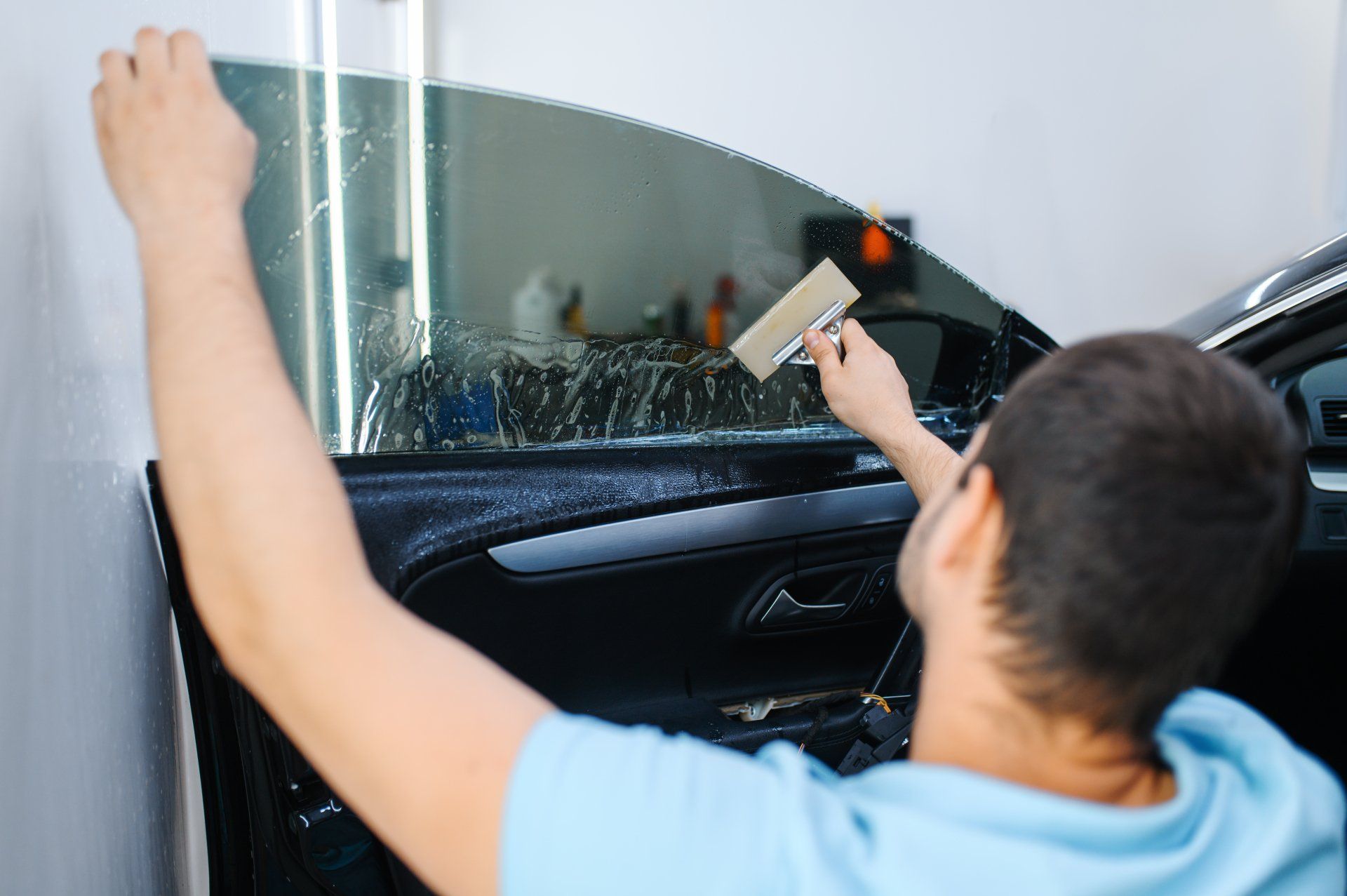The Refine of Professional Home Window Tinting Explained
From choosing the right film type to the precise preparation of windows, each step plays a critical role in attaining a flawless application. Adhering to these first prep work, the careful cutting and application of the movie need precision to avoid blemishes.
Selecting the Right Window Film
The first consideration is the kind of movie, which can range from dyed, metalized, to ceramic movies (window tinting). Dyed films mainly offer privacy and visual enhancement, while metalized films show warmth and UV rays, boosting energy effectiveness.
Next, think about the movie's Visible Light Transmission (VLT) portion, which establishes just how much light gets in the area. A lower VLT offers greater privacy and warm rejection yet might minimize all-natural light significantly. In addition, the movie's solar warmth gain coefficient (SHGC) is critical; a reduced SHGC suggests far better thermal efficiency, aiding to maintain interior comfort.

Preparing the Windows
Once the ideal window film has actually been picked, the following action is completely preparing the windows for installation. This preparation is important for accomplishing ideal bond and making sure a perfect appearance post-installation.
The very first job includes cleaning up the home windows meticulously (window tinting). A top quality glass cleaner is important, ideally one that is ammonia-free to stay clear of destructive any kind of home window seals or tint materials. Using a lint-free cloth or paper towels, technicians need to get rid of any type of dirt, dirt, or oil, paying special focus to the edges and edges where debris often gathers

Cutting the Movie
A precise technique to reducing the film is crucial for making certain an ideal fit on the prepared windows. This action requires both skill and focus to detail, as errors can result in unsightly spaces or overlaps that compromise the aesthetic and functional high qualities of the tint.
Before reducing, the professional must measure the home window dimensions properly, representing any kind of one-of-a-kind shapes or shapes. It is recommended to make use of top notch window movie, as this material has a tendency to be much more flexible during the reducing process. The film is typically laid flat on a tidy, smooth surface area, and a sharp utility blade is employed to make sure clean edges.
To accomplish optimum results, several specialists utilize layouts created from previous installments or use software to develop accurate patterns. An usual technique includes including an additional margin to the template, enabling modifications throughout the application phase.
Additionally, reducing the film in a controlled setting minimizes the danger of impurities affecting the sticky side. By adhering to these careful techniques, window tinting professionals can ensure that the film not only fits effortlessly however additionally performs efficiently in time, boosting both appearance and capability.
Applying the Tint
After diligently cutting the film to the appropriate dimensions, the following step includes using the color to the window surface. This process starts with making certain that the window is tidy and cost-free from any type of dirt, debris, or deposits that might influence bond. A specific cleansing option is commonly utilized, followed by detailed drying out with a lint-free fabric.
When the surface is prepared, the installer will meticulously place the color film versus the glass. It is critical to straighten the movie accurately to stay clear of misplacement, as any type of errors can result in a less than professional look. To facilitate this, the installer might make use of a light haze of application option on the glue side of the movie, allowing for minor repositioning if essential.
Using a squeegee, the installer will then start to push the movie onto the glass, functioning from the facility outwards to remove air bubbles and make sure a firm bond. This strategy is essential, as it assures a smooth and perfect surface. Throughout the application, interest to information is essential to stop folds or imperfections, making certain that the tint not only improves visual appeals but also offers the preferred functionality.
Final Inspection and Treatment
The final evaluation is an important action in the home window tinting process, ensuring that the installation meets both aesthetic and functional criteria. During this stage, professionals carefully check out the mounted color for any kind of blemishes, my response such as bubbles, creases, or imbalances. A thorough assessment likewise consists of checking the adherence of the film to the glass, as well as its uniformity and total appearance.
After the inspection, proper care and upkeep instructions are provided to the client. It is important to educate them concerning the recommended timeline for cleansing the tinted home windows, usually suggesting a wait of at the very least thirty days after setup to permit the sticky to heal completely. Clients should be enlightened on ideal cleansing items and methods, highlighting the avoidance of ammonia-based cleaners that can harm the color.
Additionally, experts ought to recommend consumers on the value of routine maintenance official site to lengthen the life of the tint. This includes routine look for indications of wear or damage and reacting quickly to any kind of issues. By ensuring an extensive final assessment and giving clear care standards, home window tinting specialists enhance customer contentment and the longevity of their job.
Conclusion
The professional window tinting process encompasses a number of essential actions that check that guarantee high-quality results. Choosing the proper film kind, preparing the windows thoroughly, properly cutting the movie, and using it with precision are crucial for accomplishing a flawless coating. An extensive final assessment assurances that all standards are met, while proper post-installation treatment is essential for keeping the color's long life and performance. Adhering to these procedures ultimately enhances both the aesthetic appeal and functionality of the tinted windows.